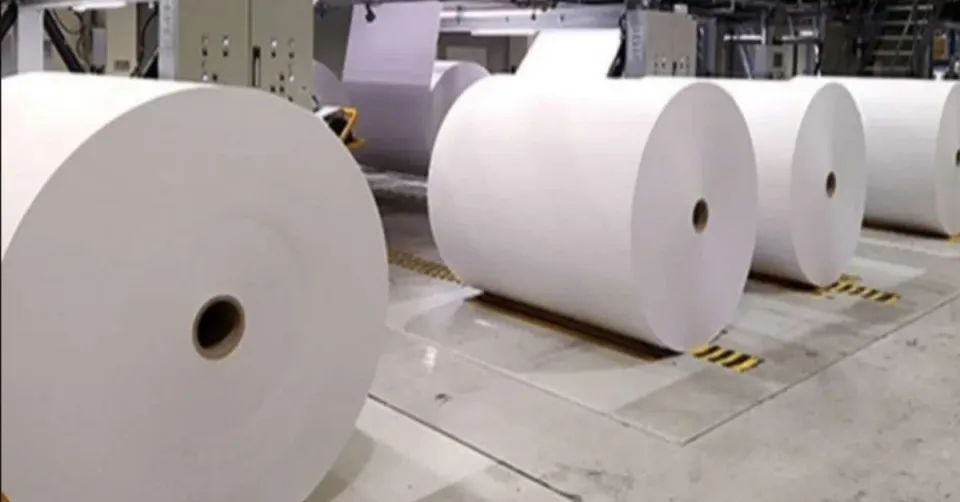Imports of paper and paperboard from ASEAN countries surged by 14% in the first half of FY26, continuing an alarming trend that has seen import volumes from ASEAN grow at over 30% CAGR over the past four years, according to the latest data released by the Directorate General of Commercial Intelligence and Statistics (DGCI&S).
The Indian Paper Manufacturers Association (IPMA) has warned that these imports are predatory in nature and are severely undermining the domestic paper industry. During H1FY26, imports from ASEAN countries reached 2.07 lakh tonnes, compared to 1.82 lakh tonnes in the same period last year. ASEAN now accounts for over 20% of India’s total paper and paperboard imports, which were over 2 million tonnes in FY25.
Commenting on the situation, Mr. Pawan Agarwal, President, IPMA, said “The Indian Paper Industry has invested more than ₹30,000 crore in recent years to modernise capacities, adopt clean and green technologies, improve product quality, and promote agroforestry. These investments, and the future of the domestic industry, are being seriously jeopardised by predatory imports being dumped into India, particularly from countries such as Indonesia and China.”
The challenge is aggravated by trade agreements that provide huge duty concessions. While imports under the ASEAN-India Trade in Goods Agreement (AITIGA) attract nil import duty, paper imports from China enjoy a 30% duty concession under the Asia Pacific Trade Agreement (APTA)
According to IPMA, export-driven economies such as Indonesia and China are increasingly using India as a dumping ground for their surplus paper and paperboard. Indonesian manufacturers benefit from substantial government subsidies and forest concessions, significantly lowering their raw material costs. In contrast, Indian paper mills largely depend on agroforestry-based sourcing from farmers, which involves higher and market-driven costs.
The situation is expected to worsen further. Significant new paper and paperboard capacities are under implementation in China and Indonesia, while protective import duties imposed by the US and European Union are diverting exports towards markets like India.
“The recent exemption of GST on uncoated paper used for notebooks and exercise books has led to IGST on imports reducing to zero. While domestic manufacturers are compelled to increase prices due to the reversal of input tax credit, foreign exporters can ship paper to India without any IGST burden. This widening price differential will result in an exponential increase in imports of uncoated paper as well as finished notebooks and exercise books, severely impacting domestic manufacturers, particularly MSMEs.” Mr Agarwal added.
IPMA emphasised that India already has adequate domestic capacity across almost all grades of paper, much of which is currently under-utilised due to the surge in low-priced imports. The continued flood of imports is discouraging fresh investments and threatening the industry’s ability to meet the country’s future demand.
In view of the serious challenges being faced by the sector, IPMA has urged the Government of India to take urgent corrective measures. The Association has recommended that the termination clause of AITIGA be invoked if the ongoing review fails to address the fundamental asymmetries and long-standing concerns of the Indian industry. IPMA has also suggested that India should consider withdrawing from the APTA to ensure a level playing field for domestic manufacturers. Domestic manufacturers have also petitioned the Government for trade remedial measures.
| India’s Imports of Paper & Paperboard (DGCI&S) | |||||||
| Year | Thousand Tonnes | ||||||
| Total | China | ASEAN | |||||
| 2020-21 | 1,084.7 | 145.9 | 145.2 | ||||
| 2021-22 | 1,145.8 | 145.8 | 148.3 | ||||
| 2022-23 | 1,436.5 | 341.0 | 266.5 | ||||
| 2023-24 | 1,929.1 | 411.4 | 514.1 | ||||
| 2024-25 | 2,054.7 | 547.3 | 415.3 | ||||
| 4 Year CAGR (%) | 17.32 | 39.17 | 30.05 | ||||
| 2024-25 (Apr-Sep) | 992.3 | 267.7 | 182.3 | ||||
| 2025-26 (Apr-Sep) | 1,014.5 | 278.6 | 207.3 | ||||
| Growth Y-o-Y (%) | 2.24 | 4.07 | 13.71 | ||||




